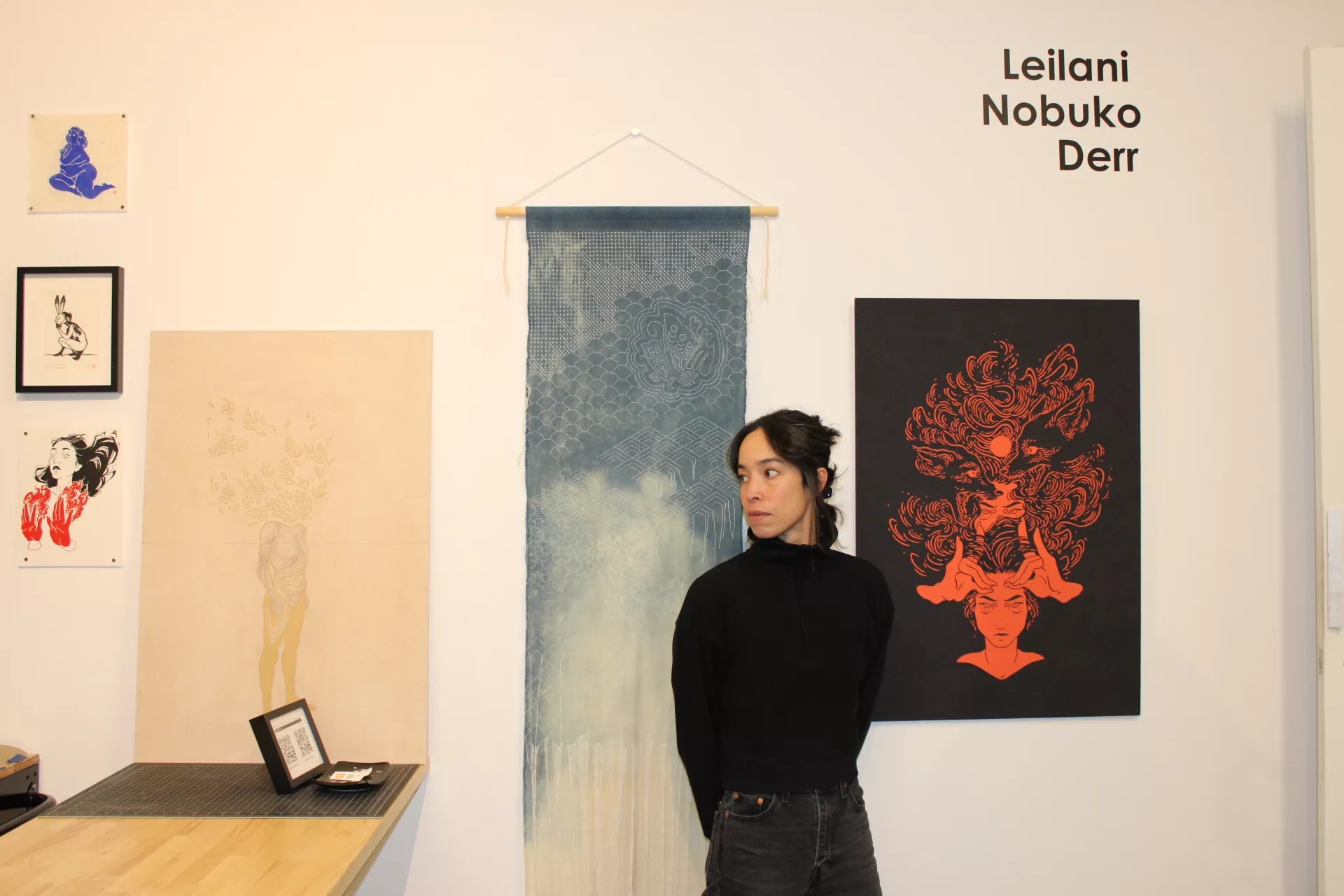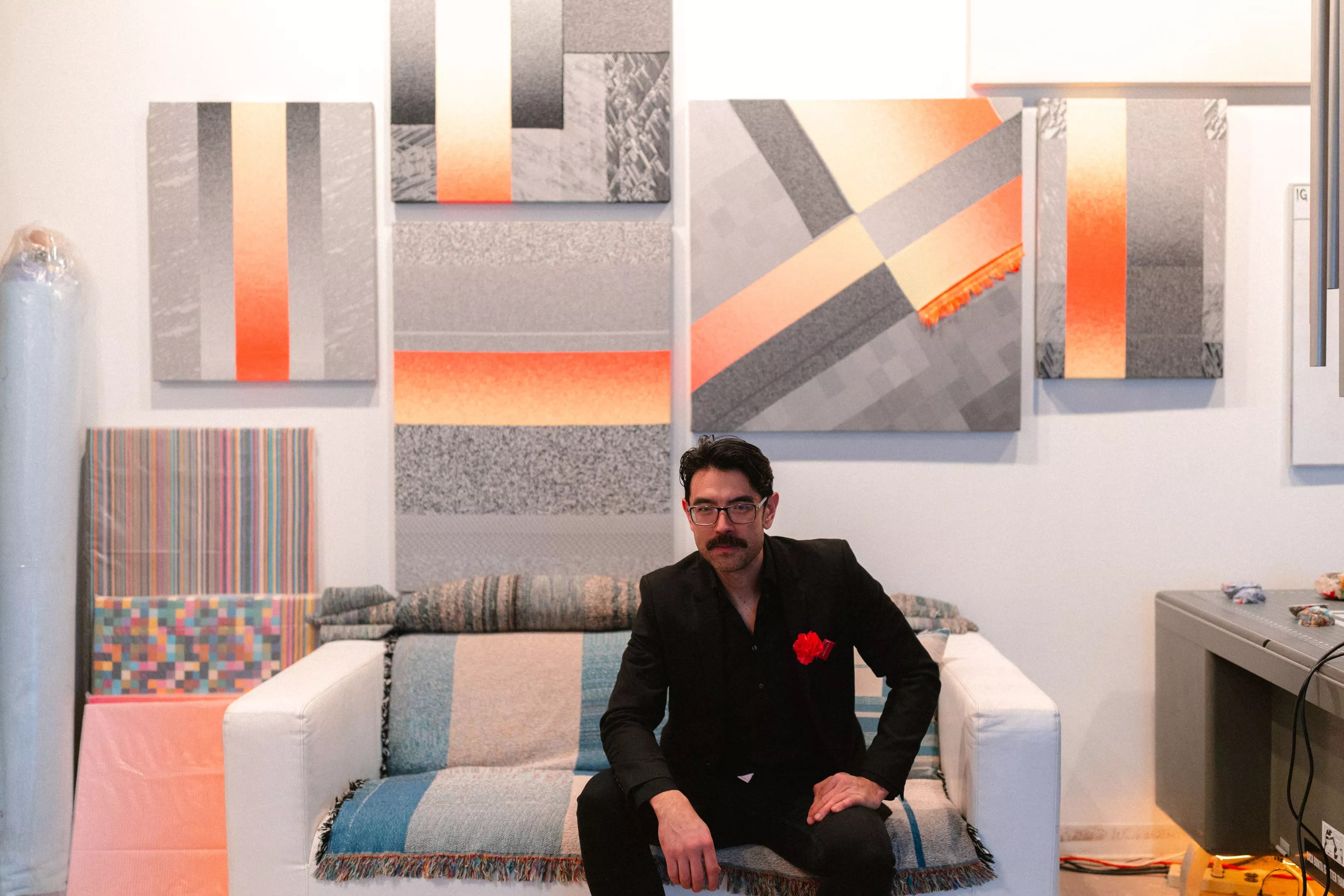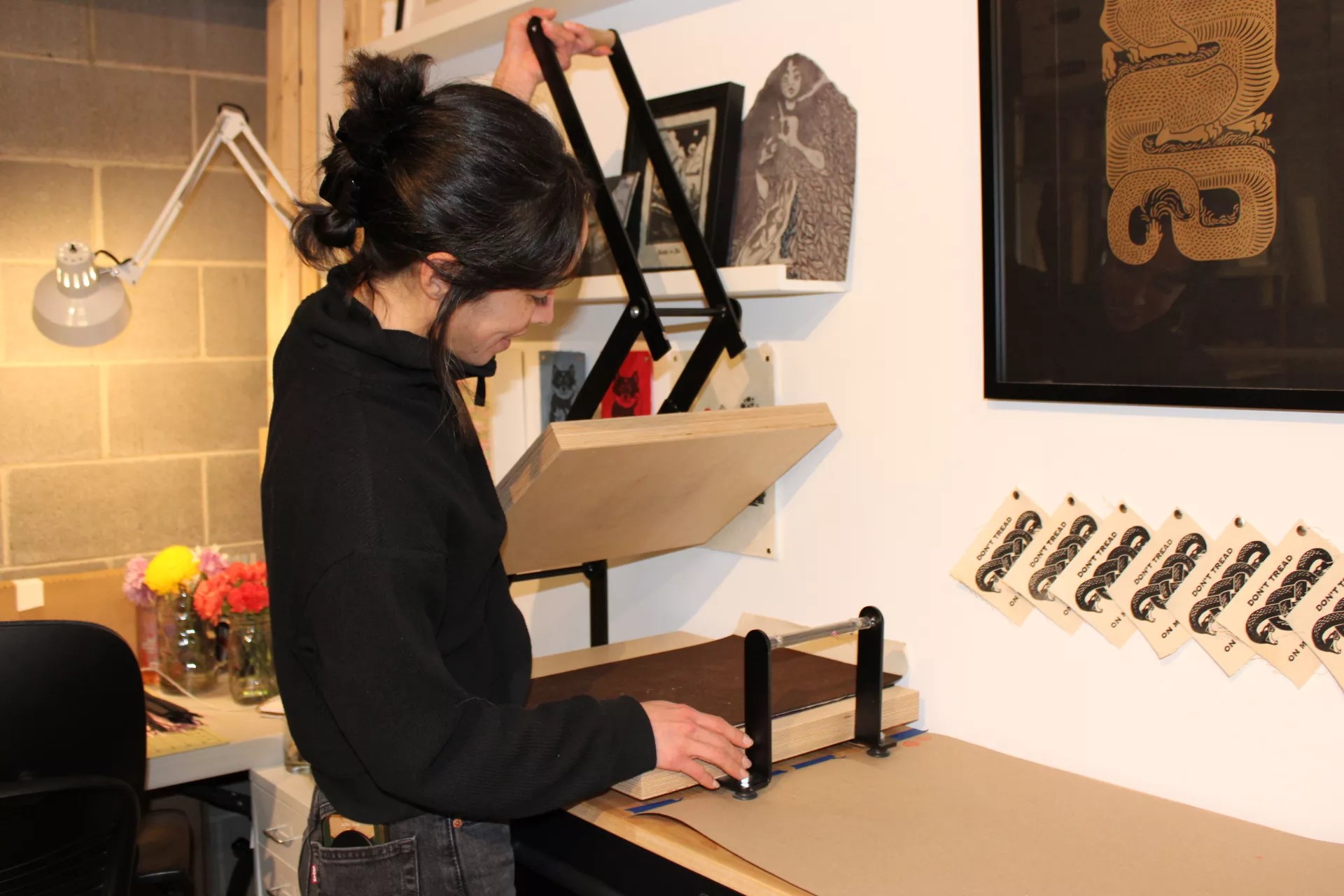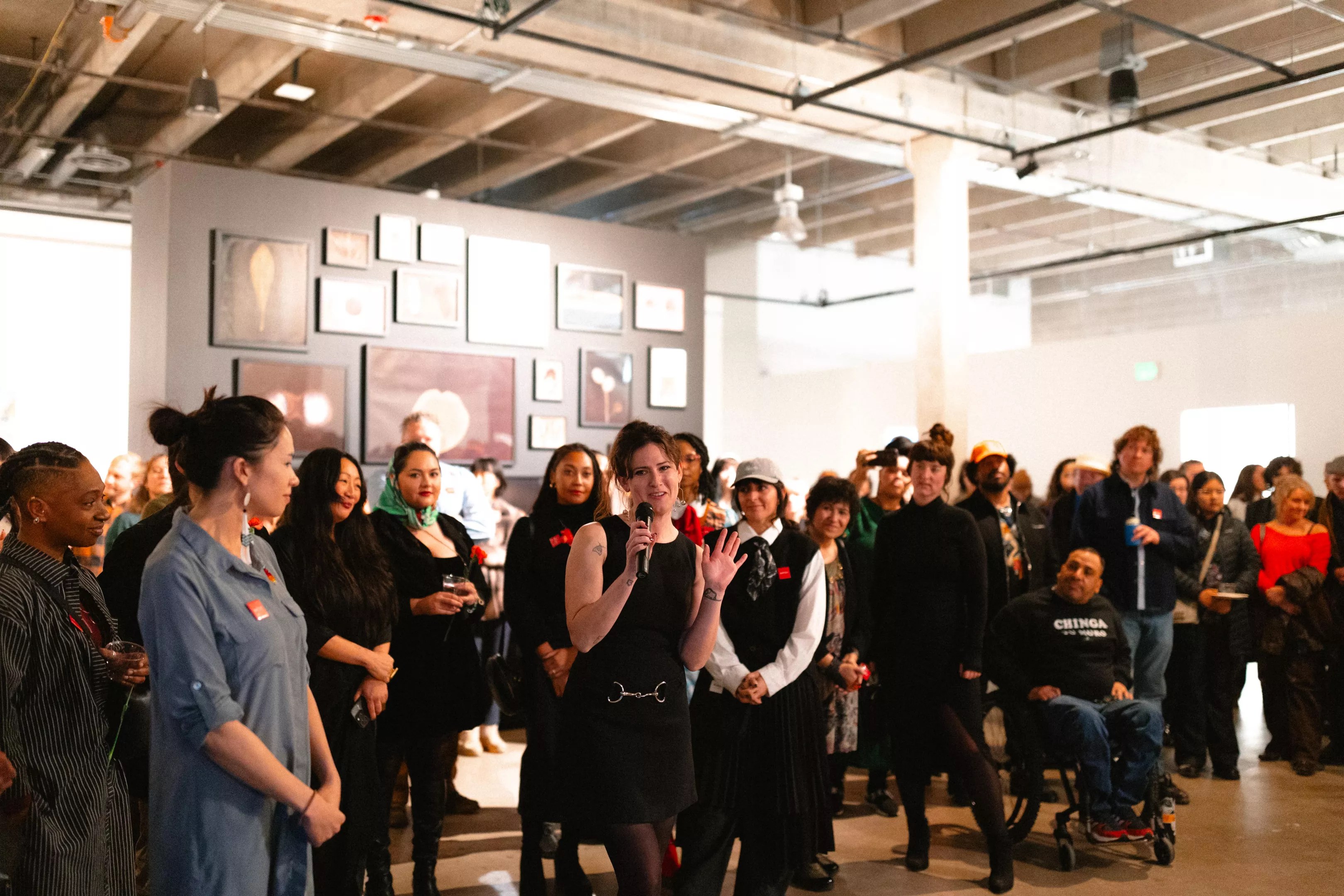
Courtesy of Toni Tresca

Audio By Carbonatix
The sky glowed an eerie orange. Smoke choked the air. For weeks, the 2025 Los Angeles fires raged across California, leaving a charred landscape in their wake. Homes burned, wildlife was wiped out and efforts to rebuild will drag on for years.
And the devastation was more than just physical; it also left an emotional scar, a stark reminder that climate change is no longer a distant threat but a present, visceral reality. Against this backdrop, RedLine Contemporary Art Center‘s Living Land: 2025 Resident Artist Exhibition arrives with an unsettling urgency, challenging audiences to reckon with humanity’s role in reshaping the environment and how the land, in turn, is reshaping us.
“In preparation for the exhibition, the L.A. fires happened, and it just proved that it was really prescient to examine our relationship to the land,” says curator Jane Burke. “There’s people who feel they’re not vulnerable to climate change and, with this incoming administration, there were all these converging issues around topics of climate change and identity. This exhibition is about how no one is immune – we’re all susceptible to the climate crisis and I think that the L.A. fires really spoke to that.”
Living Land showcases the work of RedLine’s 2024-2026 resident artists, alongside alumni from the 2022-2024 cohort. Inspired by the land-back movement, the show highlights the interplay between ecological crisis and identity, asking how climate change is altering not just the planet but our very sense of self. As Burke puts it, “Not only are we impacting the land, but there is this reflexive relationship, so the land is actually impacting our identity.”
Denver, make your New Year’s Resolution Count!
We’re $14,000 away from our End-of-Year campaign goal, with just a couple of days left! We’re ready to deliver — but we need the resources to do it right. If Westword matters to you, please contribute today to help us expand our current events coverage when it’s needed most.
Burke, Union Hall‘s executive director, has spent more than a decade immersed in Denver’s arts community. She was drawn to RedLine as a guest curator because of its strong connections with local artists and ability to foster meaningful creative discourse.
“RedLine is an epicenter, especially for local artists,” she says. “It’s hard not to be somehow tangentially affiliated with it. Louise Martorano, the executive director at RedLine, and I have been friends, and we’ve been talking about doing something together. Sometimes it’s hard when you have a day job curating, and it can be a conflict to guest curate outside. but because I was then transitioning to my current job at Union Hall, the timing just worked out really well.”
The nonprofit’s dedication to fostering local artistic growth is best exemplified by RedLine’s Artist-in-Residency Program, which is central to the exhibition. A two-year initiative designed to support emerging contemporary artists in Colorado, the residency provides fully subsidized studio space, mentorship and career development, giving artists the freedom to experiment without commercial constraints.

Artist Phillip Stearns was “blown away” by the resources available through RedLine’s Resident Artist Program.
Courtesy of Kyla Fear (@kylafearportraits)
This unique environment fosters bold artistic explorations, resulting in work that challenges societal narratives and sparks crucial conversations. For artist Phillip Stearns, RedLine provided an opportunity to reestablish himself in Denver after sixteen years away.
“I had a friend whose close friend was already a resident here, and that friend invited me to the resident show,” Stearns says. “I was blown away. I had no idea there was a space in Denver with so many resources to support multiple artists and communities at once. I applied to the Artist-in-Residency Program as soon as I found out that there was an open call and I didn’t get in the first time, but I just made it a point to kind of be present. It really got me into participating in the greater arts community, and I was lucky enough to be selected as a resident artist this time.”
His project for Living Land, entitled “Plasticine,” reflects on the current Anthropocene epoch by using fabricated “plastic rocks” to speculate on the artifacts we will leave behind.
“Are we okay with this?” Stearns asks. “If we aren’t, we should talk about what can be done. Is this really what we want future generations digging up and thinking are our artifacts? We already have things like plastic agglomerates, so I’m creating these fake plastic rocks to illustrate what our future will look like if we continue on our current path.”
Leilani Derr, another resident artist, describes her transition into the program as transformative. Coming from a background in nonprofit arts and library systems, she had long admired RedLine from the periphery. Now, she is embracing the chance to push her practice in new directions.

RedLine’s Resident Artists Program provides artists with a unique opportunity to interact directly with the public through open studio spaces designed to demystify the creative process.
Courtesy of Toni Tresca
“The best piece of advice I’ve gotten is to use this time to experiment,” she shares. “Not a lot of other residencies or programs give you this freedom. Oftentimes, organizations have a specific idea of what they want you to make so it’s got to be really structured, but RedLine is just so gracious and flexible with what you want to work on. I’m really looking forward to taking advantage of that.”
Her piece, “Yogen no tori,” explores mythology’s role in shaping cultural consciousness. Based on a prophetic bird from Japanese folklore, the work serves as a warning – an allegorical reflection of the many ignored red flags of our time. Painted in fluorescent pink, it is unmissable, much like the urgent messages it conveys.
“I’ve been really interested in mythology,” Derr says. “Coming from libraries, I’m really interested in storytelling and how mythology can really shape our understanding of the world. It’s almost like having that distance of it being a myth can allow us to see the truth a little bit better. Also, they help us understand that we created those stories; we are valuable, we are malleable and because we created them, we can move it in a different direction or reframe it completely.”
Beyond the resident artists, RedLine hosts resource artists who play a pivotal role in fostering a supportive environment. Laleh Mehran, a long-time educator and interdisciplinary artist, recently joined the program after years of being invited to participate by RedLine’s leadership.
“Two years of a free studio space is extraordinary,” she notes. “I’m not familiar with this kind of program existing anywhere else in the U.S.” As a mentor, she provides advice on everything from grant applications to conceptual refinement, but she emphasizes that the relationships are mutually beneficial.
“I’ve been teaching in higher education, both undergrad and grad, for over two decades, but these are not students,” Mehran says. “These are folks who are professionals in their own right, so in some ways, I would see it more as like a reciprocal relationship. I have a lot of experience, so I am happy to share anything, from advice on applying to programs or grants to sharing my artistic knowledge, but I am also constantly learning from them and their work.”
This spirit of exchange extends beyond the walls of RedLine. The annual residency exhibition offers artists a rare platform to engage directly with the public, opening their studios and demystifying the creative process. For Derr, this aspect was initially intimidating.
“Before coming here, I was definitely hiding a lot as an artist,” Derr admits. “At first it was scary having people come in and look at what I’m working on when it’s not finished, but I’ve gotten used to that already. The conversations I’ve had randomly have been so lovely and wonderful, so I try to be in here in my studio as much as possible.”

As Living Land opened to the public on January 24, it became clear that this exhibition is an act of defiance against the Trump administration.
Courtesy of Kyla Fear (@kylafearportraits)
For those interested in learning more about the work, RedLine will host a curatorial tour with Burke on February 15. This deeper engagement with the exhibition underscores its broader significance as an act of defiance, which became evident when Living Land opened to the public on January 24. In an era when political forces seek to suppress dialogue around climate change, social justice and personal autonomy, the artists at RedLine are refusing to be silent.
“This idea of letting the land live again is a message that feels urgent,” Burke says. “Right now, we’re in this really, really intense administration that’s wanting to control all these facets of our lives, so I think this response, and trying to be somewhat subtle but also not subtle, is a critical part of building this net for people to have as a form of safety.”
Living Land, through Sunday, March 30, at RedLine Contemporary Art Center, 2350 Arapahoe Street. Learn more at redlineart.org.